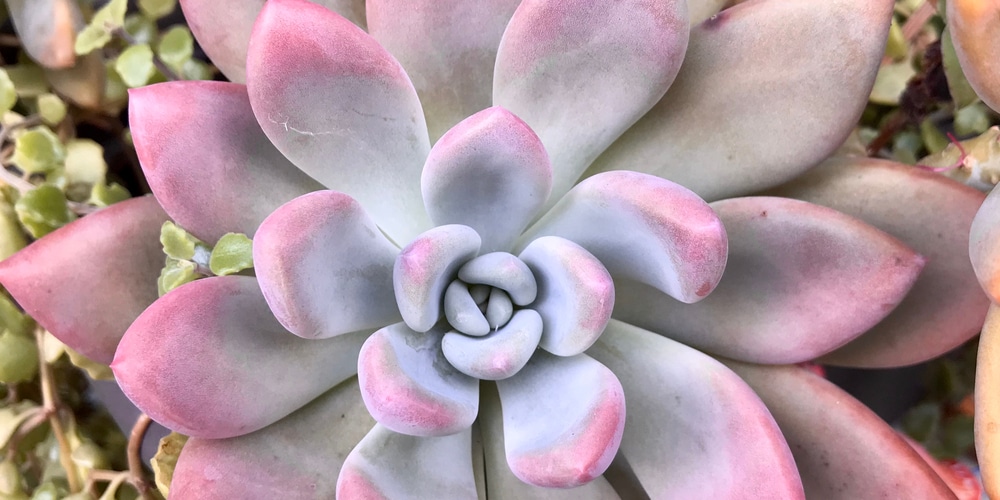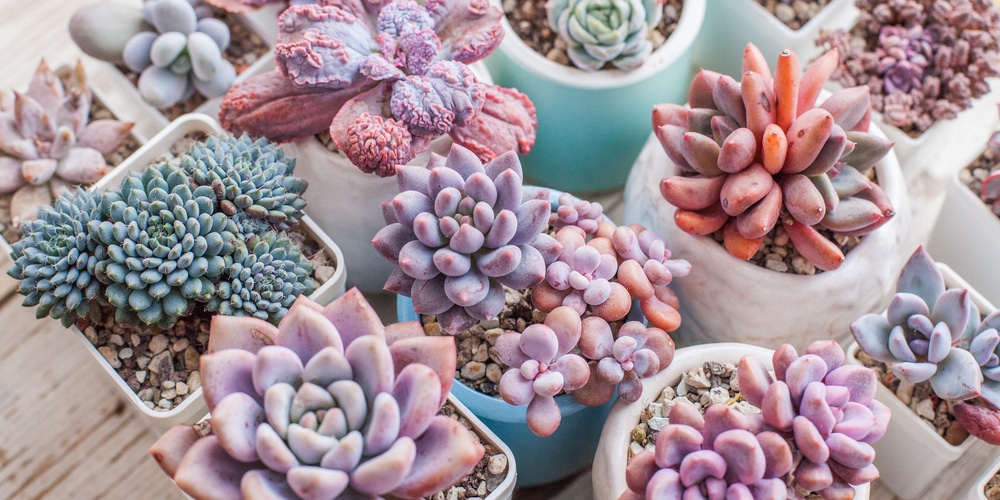Succulents are trendy and for a good reason! They’re easy to care for, drought-tolerant, and come in a huge range of shapes, sizes, and colors. If you’re looking for a beautiful and unique succulent to add to your collection, Graptoveria Opalina is a great choice! This unusual plant has beautiful yellow flowers that bloom in the spring.
The leaves of the plant are unique in that they have fleshy leaves that grow in a rosette formation, making it a treat for the eyes. The leaves are often variegated with shades of pink, purple, and green, and they have a slightly waxy appearance.
While succulents are usually low-maintenance plants, there are a few things you’ll need to do to take care of your Graptoveria Opalina.

| Botanical Name | Graptovaria Genus |
| Common Name | Graptoveria Opalina |
| Plant Type | Perennial |
| Flower Color | Yellow |
| Size When Mature | 6 – 8 inches |
| Bloom Time | Summer and Spring |
| Sun Requirements | Full Sun to Partial Shade |
| USDA Hardiness Zones | 10 – 11 |
| Soil PH Range | 5.0 – 7.0 |
| Soil Type | Acidic, Well-Draining, Succulent soil |
| Water Needs | Low to Medium |
| Native Area | Madagascar |
What You Need to Know About Graptoveria Opalina
Those who enjoy the beauty of succulents will undoubtedly want to learn more about Graptoveria Opalina. This impressively colored plant is native to Madagascar and has recently become popular among succulent enthusiasts.
Graptoveria Opalina grows to a height of 6-8 inches. Outdoors, it can grow up to 2 feet wide. The plant blooms yellow flowers that have a diameter of ½ an inch. They generally bloom in the spring and summer but can also bloom sporadically throughout the year.
The leaves are what give Graptoveria Opalina its distinct look. They’re fleshy and grow in a rosette formation. The leaves are often variegated with shades of pink, purple, and green, and they have a slightly waxy appearance.
The most striking feature of the plant is its fleshy leaves. The leaves are a beautiful mix of purple, pink, and green, often variegated with white streaks or spots.
Small, yellow flowers that bloom in the summer and springtime are produced by Graptoveria Opalina. These flowers are an absolute delight and add even more beauty to this already lovely plant.
Like other succulents, Graptoveria Opalina is easy to care for when in the right conditions. As long as you plant your succulent in bright and direct sunlight, maintaining it won’t be any problem.
Graptoveria Opalina is also non-toxic making it a perfect addition if you have a pet or a child in your home.
How to Care for Graptoveria Opalina
Here’s everything you need to know about growing and caring for a thriving succulent:
Light
For Graptoveria Opalina to be able to show its true colors, the plant should be placed where it can get bright and direct light. If the light is too dim, the leaves will begin to lose their coloration and eventually turn blue-green.
If you live in an area with very hot summers, it’s best to give your Graptoveria Opalina protection from the midday sun to prevent the leaves from scorching. A light-shaded area would be ideal.
Under bright, direct light will, Graptoveria Opalina be able to show its beautiful colors on its leaves.
Water and Soil Needs
Graptoveria Opalina is a relatively easy plant to care for. It’s important to remember that while succulents are drought-tolerant, they still need to be watered regularly. The best way to water your Graptoveria Opalina is to soak the soil and allow it to dry out completely before watering again. When the plant is dormant during the winter, you can reduce watering even further.
To facilitate drainage, Graptoveria Opalina is best placed in loose and well-drained soil. Sandy loam with peat moss is ideal. If the plant is pot-bound, it will be more susceptible to root rot, so be sure to repot it into a larger container when needed.
Ensuring the plant is in suitable soil and watered properly will help ensure a healthy Graptoveria Opalina.
Temperature Requirements
Graptoveria Opalina is hardy in USDA zones 10 and 11. Graptoveria Opalina prefers warm temperatures and does not do well in cold weather. The plant can tolerate temperatures as low as 30 degrees Fahrenheit but will not survive a hard frost. So be sure to take the plant indoors during the winter season.
Fertilizer
Graptoveria Opalina doesn’t need a lot of fertilizer, and too much can harm the plant. Fertilize your Graptoveria Opalina in the spring and summer months with a fertilizer balanced for succulents that have been diluted to half-strength.
Common Diseases
Graptoveria Opalina is relatively resistant to most diseases and pests. However, the plant can be susceptible to root rot if kept in soggy soil for too long. Be sure to allow the soil to dry out completely between waterings to prevent this from happening.
Pests such as aphids and mealybugs can also be a problem for Graptoveria Opalina. Aphids can attack the leaves and stems of the plant, causing them to become distorted. Mealybugs will suck the sap from the plant, weakening it and making it more susceptible to disease.
If your Graptoveria Opalina is infested with pests, you can treat it with water and dish soap. Mix equal parts of each and spray it on the plant. You can also use an insecticide if the problem persists.
Graptoveria Opalina Propagation
Propagating Graptoveria Opalina is a simple and rewarding process that can be done through the leaf, stem cuttings, or seeds.
Leaf Cuttings
To propagate Graptoveria Opalina from leaf cuttings, cut a leaf from the main plant and allow it to be callous for a few days. Once the leaf is dry, insert it into well-drained soil.
Stem Cuttings
The ideal time to take cuttings is in the spring or summer, when the plants are actively growing. Choose healthy leaves or stems about 4-6 inches long for best results. Cut the stem at a 45-degree angle just below a leaf node (the point where the leaf meets the stem). Remove any lower leaves from the cutting, and dip the cut end in rooting hormone.
Next, plant the cutting in a well-draining potting mix and water lightly. Place the pot in a bright, warm location out of direct sunlight. Within 6-8 weeks, roots should begin to form. Once your cutting has rooted, you can transplant it into a larger pot or into your garden.
Seeds
You can collect seeds from the flowers of the flowers. Once the seeds have ripened on the plant, they can be harvested and sown in well-drained soil.
Keep the soil moist but not wet, and you should see new growth in a few weeks.

